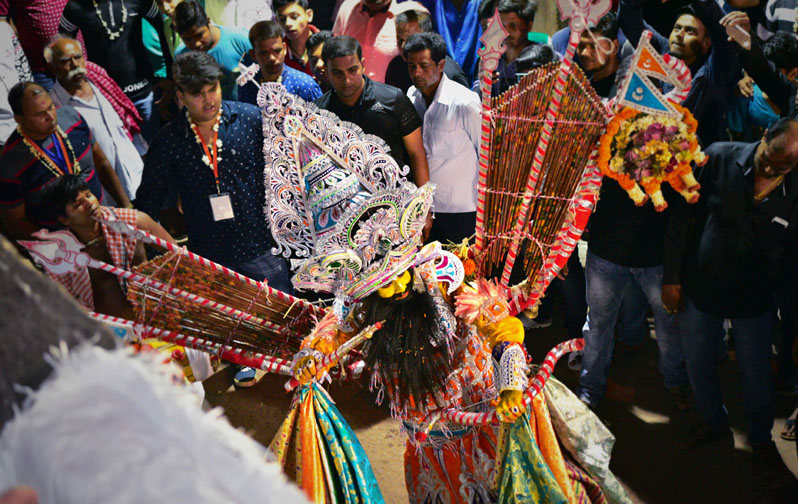The advent of Internet and digital media has driven the many folk arts of Odisha to the verge of extinction. Even people in rural areas having access to Internet no longer care to watch local folk artistes perform at the village pandal.
However, in a bid to preserve knowledge about folk arts and artistes, arts connoisseur Prateek Patnaik ventured to research and document Odisha’s arts heritage utilising contemporary technology. His documentaries Bharata Lila, Sahi Jata and Prahallada Nataka have brought him wide acclaim.
Sunday POST talked to Prateek to know more about his work on the dying art forms of Odisha. Excerpts:
What’s the need to document dying folk arts?
Odisha has over 400 folk art forms in dance, music, theatre, ballads and others. Perhaps we may not be able to name more than ten, if asked to do so. That is enough indication of how unaware we are of our culture. We may not be able to enlist all our folk arts for posterity, as many of them are dying a slow death day by day because of diminishing audience and lack of patronage. So, we must do something to save what is left of our culture. I think there is no better way to preserve the performing arts for posterity than documenting them.
How did you start on this project?
I had been documenting arts using digital methods for a long time. In the early stages, I used to record whatever I saw – be it a Pala performance somewhere or a lone tribal musician playing his instrument mahuri. I would invite Nath-yogis who play kendera and move from door to door, singing. I would ask them to sing so that I could record them. The documentation of Prahallada Nataka was one of my long-standing dreams. I decided to undertake it on a larger canvas than my previous projects. I have produced more than 100 hours of footage with the support of many well-wishers. I have also documented Bharata Lila of Ganjam and Sahi Jata of Puri. I plan to document more such endangered folk arts.
You have earned recognition for documenting ‘Prahallada Nataka.’ Tell us more about that.
I developed an interest in Prahallada Nataka after watching a video on YouTube. The costumes, music, dialogues, and dance, everything in the art form is magnificent. I have been collecting material for the past five to six years. Fortunately, a year ago I found that Professor John Emigh of Brown University had conducted extensive research on folk arts in the 80s-90s. I sent an email to him and he immediately responded and provided a great deal of research material. It took four-five months of planning for everything to materialise. Debendra Pattanayak and Arjun Samantaray joined me on the core team. The footage is now being edited and will be released on YouTube with English subtitles for everyone to watch, for free.
Is documentation more important than just shooting videos?
I conduct research for all my projects. I consider this important because without a proper idea of what is being communicated, you can never do justice to your project. There is a never-ending stream of specialised knowledge and I try my best to be as rigorous with the research as possible. In most cases, I look for the original text. I have been singing Odissi music, so I try to learn the songs myself. This research proves to be immensely helpful when I am working in the hinterlands, when everything is happening so quickly that one cannot afford to think twice. Also, village people are often friendly when they find me using rustic terminology.
How do you think your work will be received by audiences across the globe?
I make it a point to provide subtitles in Odia and English. In Odia, because you can never leave the original and in English because it is needed to reach people across the globe. This English link had been missing, causing much difficulty, as our arts remained limited within the districts. Rural artistes are unacquainted with English, so hopefully this aspect will help them earn more recognition.
Tell us about the artistes whose performance you have documented.
I would like to thank the wonderful artistes we have come across during our journeys: The brilliant A Rajendra Patro, who played Hiranyakashyapa in Prahallada Nataka, and the veteran Rankanidhi Behera, who played the duari role in Bharata Lila with ease. I am fortunate indeed to have found the best artistes, truly dedicated to their craft.
What are some of your other projects?
Besides this, I have tried digital documentation in many other fields, including palm leaf manuscripts, antique books, unavailable Odissi tunes, endangered languages and lesser-known temples. I research about Jagannath and Odisha’s culture, under the guidance of Dr Devdutt Pattanaik, and often write about them online and offline. I am also quite active on Odia Wikipedia, an open-source project to make available the world’s knowledge in Odia. Without creating more content about our people and culture online, one cannot survive in the age of Internet. That is what I try to do: I use technology to empower language and preserve culture.
Himanshu Guru, OP
